Cinnabar's August "Specimen" Schmidt - "Specimens From Out of the Park"
Copyright 2018 Robert V. Goss
August “Specimen” Schmidt, a colorful character that dwelled in the small hamlet of Cinnabar, Mont. from the late 1870s to 1914, was a German immigrant and Civil War veteran who immigrated to the U.S in 1863 at age 26. After traipsing about the western part of our counrty after the Civil War, he would up in the area a few miles north of Yellowstone Park, along the river that bears the same name. Cinnabar, 3-4 miles north of the town of Gardiner, slowly sprung up in 1883 with the arrival of the Northern Pacific railroad that carried coutless numbers of tourists to the fabled Wonderland. The Gateway town of Cinnabar boomed in its small way until 1903 when the rail line continued on into Gardiner, on the northern border of Yellowstone.
|
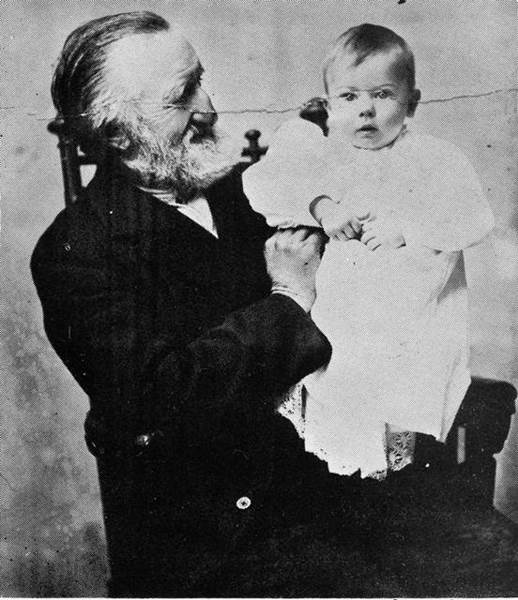 |
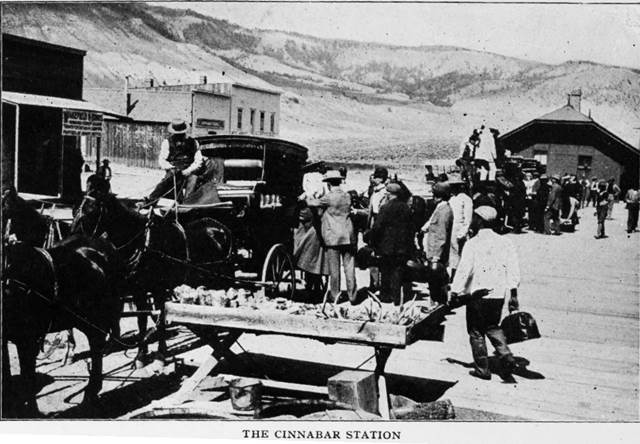 |
Schmidt earned his daily bread by offering local specimens to the traveling public. He set up a small table near the depot and hawked his wares for about 20 years. He peddled petrified wood, common in the mountains above town, and probably agates, deer/antelope horns, and no doubt whatever else he could find in the surrounding hills and valleys that he reckoned would appeal to the public. That income, along with a small stipend from the government for his service during the Civil War apparently met his meager needs. Schmidt, sometimes referred to as "Specimen Smith," spent June to September every summer peddling his wares to the tourists, while during the off-season occupied his days exploring the nearby mountains and canvassing the area
gathering his specimens, and then preparing them for the following summer in his humble cabin on Cedar Creek.
Photo courtesy Burton Holmes Travelogues, 1905
|
Schmidt was a crafty fellow and created a sign for his specimen stand that read, “For Sale – Specimens from Out of the Park.” His intent, of course, was to beguile the public into thinking his goods were from Yellowstone Park. His plan generally worked well, almost too well on one occasion.
Sometime in the 1890s, Acting Superintendent Capt. George Anderson got wind of “Specimen Schmidt’s” sign and rushed down to Cinnabar to lambast the old gent for daring to sell Yellowstone curiosities. According to a story told by park photographer Jack Haynes, Anderson, a robust man with red hair and temper to match, “. . . laced into Shultz [Schmidt] without preliminaries. The old German took some stiff abuse before he had his opportunity for a rebuttal. “Captain, I vas careful mid dot sign; you see it says ‘specimens from out of the park, ’nod from in the Park.”” |
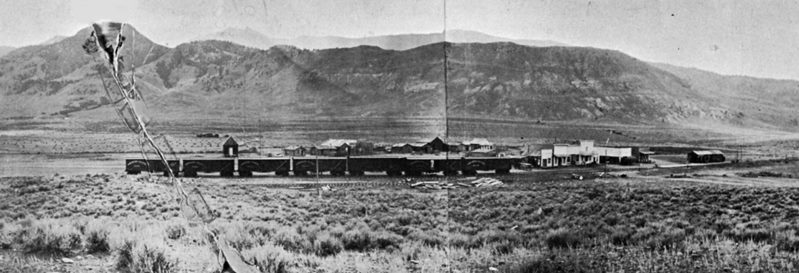
Photo courtesy Doris Whithorn,
Aldridge Book |
Occasionally Schmidt would be joined on the platform by Calamity Jane, who was known to hang out in the Horr (later renamed 'Electric') and surrounding areas in the late 1890s to early 1900s. When she was not drinking or carousing, she might be found in Cinnabar hawking a picture of herself and a small autobiography she had printed up. She also went into Yellowstone to peddle her wares at the various camps or hotels. Schmidt, who was a great enthusiast for the 4th of July, certainly would have been around Calamity in 1894 when she was in Cinnabar to celebrate. Ida McPherren, resident of Cinnabar and great niece to Hugo Hoppe, recalled Jane’s appearance there: She was “dressed in buckskin trousers, fringed buckskin jacket and a man’s wide brimmed hat." Calamity was "in the height of her glory because she was creating a sensation.
Photo courtesy Public Domain
|
|
|
Schmidt was joined at the depot by other little-known entrepreneurs, who also vied for the dollars spent by the specimen-loving tourists. These included Specimen Bill Lindstrom, who sold "coated specimens" created from the mineral-laden waters of Mammoth Hot Springs; William Davis, who sold specimens simiar to that of Schmidt; and Geyser Jim, who peddled coated specimens and colored sands, along with agates and petrified wood.
Photo by Canvassers, American & Foreign Views, Public Domain |
|
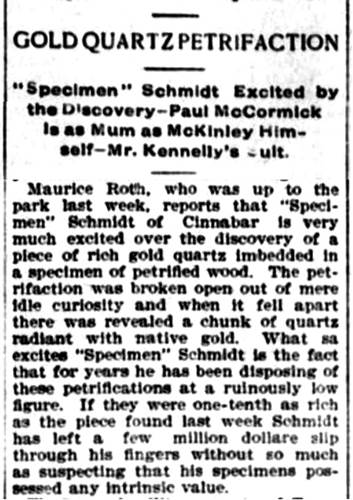 |
"Rattles" from March of 1892 & Striking Gold in 1896
it was reported by the Billings Gazette that,
"An old curio vendor and national park specimen dealer at Cinnabar, known as Professor Smith, has among other curious pets, an enormous rattlesnake which he calls Dandy. The snake was captured early last spring by Joe Keeney and tamed by the professor, who now handles it with as little fear as one would a kitten. Gently approaching it he will seize it by the back of the head and quick as a flash it coils around his arm and rests contentedly. Smith places it on the ground and the snake follows him around like a dog, coiling whenever its master stops and obediently following his movements."
____________________________________________________________________
Four years later, the Anaconda Standard (June 1896) published an amazing article claiming Specimen Schmidt found a chunk of petrified wood that was embedded with a piece of rich gold in quartz. However, that choice bit of news seems never to have been followed up upon in future newspaper reporting. Click on the image at left to read the story of this geological curiosity.
|
A "Fishy" story of the Yellowstone
Livingston Post: The largest trout that has ever been caught in the state, within our knowledge, was taken from the waters of the upper Yellowstone, in Yankee Jim’s canyon last Thursday. It weighed eight pounds and nine ounces and measured 20 inches in length and 17 inches in circumference. “Specimen” Schmidt is accredited with having made this remarkable catch, although Conductor Ed. Winston, who exhibited the speckled beauty at the depot Thursday evening, blushingly replied in the affirmative when asked by a number of ladies in the depot if he had caught “that lovely fish?” The ladies of course wanted to know how such a small man could land such a big trout. Ed. replied by saying that when the trout caught sight of him it fainted and all he had to do was to reach down, clutch it by the tall and throw it out of the stream. “Red” effectually put at rest all doubt as to the ownership of the trout by saying: “Is it my fish? Why, of course it is! Look at us—me and the beautiful speckled trout! Don’t you see the resemblance? It has a florid complexion—and see—it is even red-headed !” However, it matters not who caught the trout or to whom it belongs. It is sufficient to know that the specimen has been stuffed and mounted for County Commissioner Hoppe, who will take it with him when he goes to the World's Fair next month.
[ Butte Daily Post, 8 May 1893 ]
|
|
|
In 1911 Schmidt had a birthday celebration that went terribly wrong. It had been his custom to celebrate his birthday every year with a younger, but old friend named Andrew McCune. The normally good-natured celebratory event involved ample amounts of whiskey, but this year the joyful occasion turned into a fatal brawl. McCune was fairly well befuddled and spent the night in one of Schmidt’s cabins. In the morning, the two began to quarrel, as is often the case with sots, and McCune knocked Schmidt down, began beating him with an iron cane and smacked his head with a board. Smith pleaded with his friend to stop, but he refused, and finally Schmidt took a shotgun from the wall and fired a fatal shot direct to the heart. The following day, Saturday, April 8, after being transported to Livingston, he appeared before a coroner’s jury who believed his testimony of self-defense and brought in a verdict of not guilty. Schmidt was released and he returned to his cabin in Cinnabar.
Newspaper Article from Montana Standard, Butte, Mt, 8 Apr 1911 |
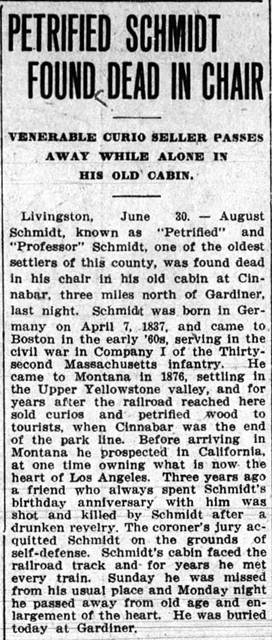 |
After Cinnabar closed up in 1903, Schmidt continued to live in his cabin on Cedar Creek on the Hoppe ranch near the rail line until his dying day, waving to the tourists on the train as it passed by. "Specimen" Schmidt quietly passed way on June 29, 1914. His body was wrapped in an American flag and transported into Gardiner where he was interred in the local cemetery.
Left: Anaconda Standard, Mont., 1 Jul 1914
Right: Schmidt tombstone, Tinker's Hill, Gardiner, Mont.
|
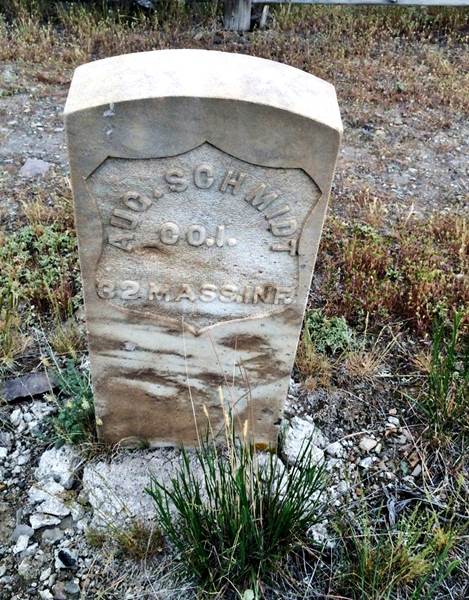 |
Click on the images below to view my Specimen Schmidt article,
published in the October, 2018 edition of the Montana Pioneer, Livingston, Mont.
|
 |
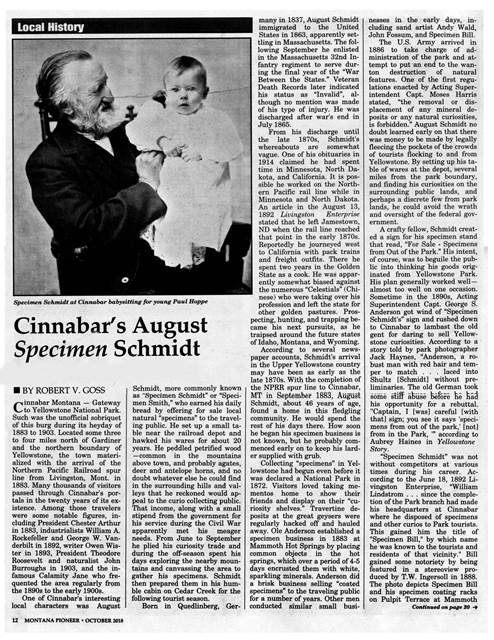 |
 |
Copyright 2018 by Robert V. Goss.
All rights reserved. No part of this work may be reproduced or utilized in any form by any means, electronic or mechanical, including photocopying, recording or by an information storage and retrieval system without permission in writing from the author. |
|